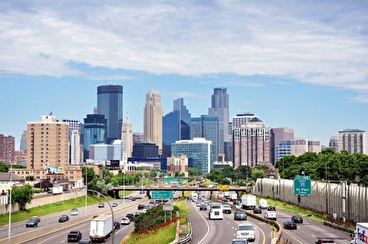Increased job access via auto in all major US metros during COVID-19 pandemic
Access Across America: Auto 2021, which estimates the ability of people to connect to opportunity via the road network, shows that access to jobs by automobile had increased in all of the top 50 U.S. metropolitan areas nearly a year into the COVID-19 pandemic. Rankings of the top 10 metro areas for job accessibility by auto increased an average of about 83% from the previous year.
The study also shows the change in congestion impacts for each metro since January 2020 (prior to the pandemic). Access to jobs by auto decreased due to congestion delays in only one of the 50 largest U.S. metros — Memphis, Tennessee.
For example, job accessibility in the 6th-ranked San Francisco metro area increased by 106% over the previous study with the average worker traveling by auto able to reach 1,444,468 jobs within 30 minutes. The San Francisco metro also ranked 49th for growth in congestion impact, down from ranking 1st the previous year, with 826,857 more jobs accessible within the same 30-minute commute during peak travel times.
In another example, Dallas ranks 4th for job accessibility but 21st in congestion impact, suggesting that job accessibility is influenced less by congestion there than in other cities. By contrast, Miami ranks 19th for job accessibility by auto but 4th in congestion impact, indicating that congestion plays a relatively larger role in limiting local access to jobs than in other metro areas.
The report reveals that the measurable impact of the widespread adoption of telework in the United States is, paradoxically, a substantial increase in accessibility by auto to jobs in most areas. The increases were strongest in the areas previously most limited by congestion — comparison of 2021 with 2020 metropolitan maps shows the “ring of congestion” migrating outward from job centers if it is present at all.
These increases in access should not be dismissed as unimportant because of telework, however. The vast majority of workers continued to travel to work on site throughout the COVID pandemic, and those that did travel to work were more likely to have lower incomes than those able to work remotely.
Key factors affecting the rankings for any metro area include the number of jobs available and where they are located, the road network structure, traffic management practices, the provision of alternate transportation modes, and population size, density, and location. Better coordination of transportation systems with the location of jobs and housing will improve job accessibility by auto.
The findings have a range of uses and implications. State departments of transportation, metropolitan planning organizations, and local government agencies can apply the evaluations to performance goals related to congestion, reliability, and sustainability. In addition, detailed accessibility evaluation can help in selecting between project alternatives and prioritizing investments.
Data used in the 2021 report were collected after the onset of the COVID pandemic and resulting travel behavior changes. Future reports will reveal whether the behavioral changes observed in 2021 will persist, or whether accessibility will be more strongly limited by a return to peak congestion.

